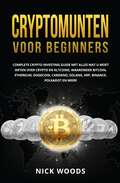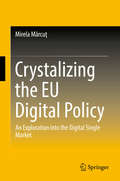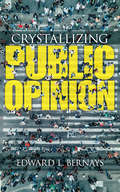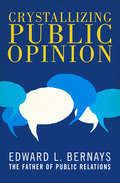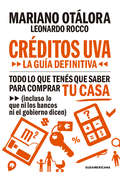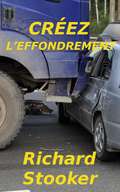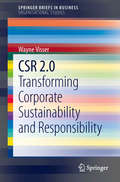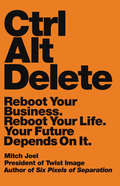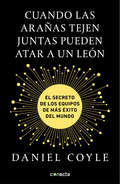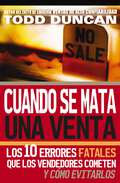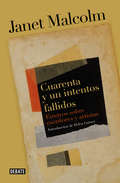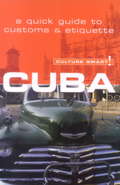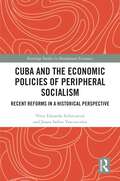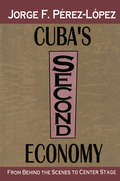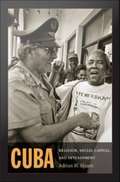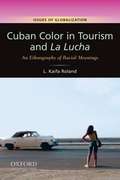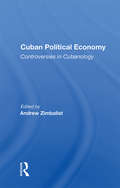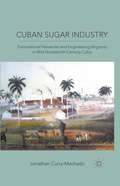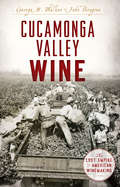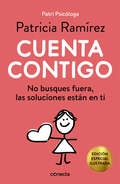- Table View
- List View
Cryptomunten Voor Beginners: Complete Crypto Investeringsgids met alles wat u moet weten over Crypto en Altcoins.
by Nick WoodsIn dit boek zullen we diverse onderwerpen behandelen waardoor u een beter inzicht verkrijgt in de wereld van de cryptomunten. Een Cryptomunt is geen eenduidig begrip maar omvat verschillende digitale munten waarmee u goederen en diensten kan kopen of op zichzelf kan verhandelen. Bijna een derde van investeerders in cryptomunten zijn tussen de 25 en 34 jaar en dat maakt het een populaire investering bij jongere mensen. Nochtans kan iedereen, van welke leeftijd of afkomst ook, een goede opbrengst realiseren door te investeren in deze munten. Cryptomunten bestaan niet in een fysische vorm maar zijn volledig gedigitaliseerd. Dat betekent dat de boekingen van deze munten bewaard en opgeslagen worden in hoog beveiligde virtuele databases. Bijgevolg zijn zij minder vatbaar voor namaak. Door de constante en voortdurende stijging van de populariteit van cryptomunten is hun verhandeling een prima manier geworden om een goede opbrengst te verkrijgen van een financiële investering. U moet het echter wel op de juiste manier doen. We zullen het hebben over de betekenis van cryptomunten en de verschillende types. Naast een beter inzicht in cryptomunten zult u ook leren over de blockchain technologie en hoe deze functioneert. Maar eerst en vooral moet u onthouden dat het best is klein te beginnen eerder dan u hals over kop in de markt te storten. Bouw uw investeringen geleidelijk op terwijl u leert op de markt te handelen. Naarmate u praktische ervaring opdoet kunt u een beslagen en zelfverzekerde investeerder in cryptomunten worden. Voor vele mensen is investeren in cryptomunten een bijverdienste maar het kan het primaire doel worden van hun financiële strategie. Nu de markt van de cryptomunten een globaal hoogtepunt van twee biljoen US dollars heeft bereikt is er voor iedere investeerder ruimte om geld te verdienen en te genieten van de crypto rit.
Cryptopolitics: Exposure, Concealment, and Digital Media (Anthropology of Media #12)
by Victoria Bernal, Katrien Pype, and Daivi Rodima-TaylorHidden information, double meanings, double-crossing, and the constant processes of encoding and decoding messages have always been important techniques in negotiating social and political power dynamics. Yet these tools, “cryptopolitics,” are transformed when used within digital media. Focusing on African societies, Cryptopolitics brings together empirically grounded studies of digital media toconsider public culture, sociality, and power in all its forms, illustrating the analytical potential of cryptopolitics to elucidate intimate relationships, political protest, and economic strategies in the digital age.
Crystal Meadows of Tahoe, Inc.
by William J. Bruns Jr.An introductory case in cash flow analysis and the preparation of statements of cash flows. Based on the 1991 income statement and balance sheet at a ski resort company, the case provides additional information which allows a student to prepare both a direct and an indirect statement of cash flows. A rewritten version of an earlier case.
Crystalizing the EU Digital Policy: An Exploration into the Digital Single Market
by Mirela MărcuţThis book explores the intricate connection between the Single Market, characterized by the freedom of movement of goods, services, capital and labor within and across Europe, and the Digital Single Market, the virtual space that promotes freedom of movement of information and data. Both a result and catalyst of the Single Market, the Digital Single Market has become a different space from the Single Market, as the former is based on the application of information and communication technologies (ICTs), while the latter is the result of concerted actions and concessions by Member States in the European Union. The author argues that, similar to the Single Market, the Digital Single Market is an instrument, built by the influence of the Internet, which can provide a new means of socio-economic growth and development in Europe. While sharing many similar characteristics, the Single Market and the Digital Single Market diverge in important aspects, particularly with respect to policy. The research analyzes the interaction between policy actors, their influence in the European decision-making process, and their interests in order to establish a digital policy model, in comparison with market policy. Moreover, this volume considers the implementation process and the success of such initiatives under the current policy model, and puts forward policy recommendations. Ultimately, the author considers the utility of such research on digital policy, considering the current focus on migration, vulnerabilities to internal challenges (e. g. , Brexit) and security threats, maintaining that the discussion of digital policies relates to an innovative vision of the European integration process and prospects for its future.
Crystalline Silicon Solar Cells: Carbon to Silicon — A Paradigm Shift in Electricity Generation, Volume 1
by Saleem Hussain ZaidiThis book focuses on crystalline silicon solar cell science and technology. It is written from the perspective of an experimentalist with extensive hands-on experience in modeling, fabrication, and characterization. A practical approach to solar cell fabrication is presented in terms of its three components: materials, electrical, and optical. The materials section describes wafer processing methods including saw damage removal, texturing, diffusion, and surface passivation. The electrical section focuses on formation of ohmic contacts on n and p-doped surfaces. The optical section illustrates light interaction with textured silicon surfaces in terms of geometrical, diffractive and physical optics, transmission, and surface photovoltage (SPV) spectroscopy. A final chapter analyzes performance of solar cells, fabricated with a wide range of process parameters. A brief economic analysis on the merits of crystalline silicon-based photovoltaic technology as a cottage industry is also included.This professional reference will be an important resource for practicing engineers and technicians working with solar cell and PV manufacturing and renewable energy technologies, as well as upper-level engineering and material science students.Presents a practical approach to solar cell fabrication, and characterization;Offers modular methodology with detailed equipment and process parameters supported by experimental results;Includes processing diagrams and tables for 16% efficient solar cell fabrication.
Crystallizing Public Opinion
by Edward BernaysFamed as "the father of public relations," Edward Bernays pioneered the technique of working to change attitudes rather than just selling products. In this 1923 classic, the first book ever written about the public relations industry, he delineates the approaches that corporations and governments have taken for the past century to influence social tendencies.Crystallizing Public Opinion identifies the techniques employed by public relations professionals, from authoritative-sounding surveys to persuasive endorsements from opinion leaders, celebrities, and experts. Bernays — whose high-profile clients included Procter & Gamble, General Electric, CBS, NBC, and Time, Inc. — cites examples from his successful campaigns, including a physician-endorsed promotion of bacon as a healthy breakfast option. He quotes leading theorists on the role of herd mentality in the minds of the educated as well as the ignorant, and he explains the value of communicating the right facts at the right time to a targeted audience. Although technology has changed in the years since this book's debut, human nature has not, and these principles remain of timeless value to business and marketing professionals, students of public relations, and other readers.
Crystallizing Public Opinion
by Edward L. BernaysA revolutionary work on public relations and marketing by the provocative thinker who was dubbed the father of public relations Few books have been as quietly powerful as Edward L. Bernays's Crystallizing Public Opinion. First published in 1923, it is a groundbreaking and, as history has shown, influential guide to the most crucial principles of mass persuasion. Aimed at governments and corporations in the wake of World War I, this classic work combines crowd psychology with the pillars of psychoanalysis to argue the importance of public relations in democratic society. Citing far-reaching case studies from the resuscitation of a beleaguered magazine in New York to Lithuania's campaign for global recognition, Bernays illustrates the burgeoning significance of his field in shaping public opinion while also laying out the crucial techniques for mobilizing broad-based support in an increasingly fragmented world. Celebrated by PBS in its Books That Shook the World feature, Crystallizing Public Opinion occupies a fascinating place in history, defining both a concept and a system that were taken up by progressive social movements, corporate barons, and national governments alike.
Créditos UVA: Todo lo que tenés que saber para comprar tu casa (incluso lo que ni los bancos ni el gobiernos te dicen)
by Mariano OtáloraCompleto y accesible, este libro explica minuciosamente de qué se trata el sistema de créditos UVA y despeja los temores más comunes. Información pura (que incluye lo que ni los bancos ni el gobierno dicen) para decidir cómo cumplir el anhelo de ser propietario sin morir en el intento. La casa propia, sueño de millones de familias argentinas, fue por décadas una quimera y, en repetidas coyunturas, una pesadilla. El cóctel en el que, en proporciones históricamente variables, se combinaron salarios bajos, inmuebles con precios inalcanzables y falta de crédito hipotecario, agitado siempre en ciclos de inestabilidad y crisis, y bebido alrededor de los fantasmas de la hiperinflación y la devaluación, envenenó a generaciones que se asumieron condenadas al círculo vicioso del alquiler. Lanzados con éxito en 2016, los créditos UVA ("unidad de valor adquisitivo"; en definitiva, ajuste por inflación) no tardaron en posicionarse, para muchos, como la solución al problema de la vivienda. Sin embargo, son mirados por otros con justificable desconfianza y despiertan cantidad de dudas; la principal: ¿qué pasaría con las UVA frente a un "rodrigazo", una hiperinflación, una crisis como la de 2001?
Créez l’Effondrement: Guide pratique : se préparer à la chute économique et s’en sortir plus riche
by Richard StookerLa crise financière de 2007-2009 semble avoir été le premier pas vers une dépression déflationniste qui pourrait détruire l'épargne de trois générations d'Américains. Le dollar américain a récemment atteint de nouveaux records de baisse par rapport au yen japonais et au franc suisse , malgré les interventions massives des banques centrales de ces deux pays. La Chine s'est départie de 97% de ses avoirs en bons du Trésor américain à court terme. Cela s'est produit en mars 2011, bien avant la dégradation actuelle. La Chine détient toujours plusieurs milliards de dollars d’obligations du Trésor à long terme et est clairement inquiète pour l’avenir. Elle fait une grande démonstration de soutien à l’économie européenne, elle a donc une alternative au dollar américain. Qu'est-ce qui ne va pas chez nous quand le plus grand pays communiste de la Terre doit nous enseigner comment gérer notre monnaie? Combien de temps encore la Chine, le Japon et les banquiers internationaux continueront-ils d'acheter des bons du Trésor américain pour financer notre budget gonflé? Si ces pays commençaient à vendre des dollars américains au lieu d'acheter, l'hyperinflation mettrait l'Amérique en faillite. Nous - et les Européens - sommes également menacés par les problèmes d'endettement de l'Europe . La Grèce a failli s'enflammer suite aux mesures d'austérité imposées à ce pays. L'Italie, l'Espagne, le Portugal et l'Irlande sont également en mauvais état. Combien de temps les contribuables français et allemands continueront-ils de les soutenir? Si l'euro se désagrège, cela créera plus d'instabilité financière pour le monde entier. L'or a récemment atteint un record de 1 813 $ l'once. Je ne peux pas vous dire exactement ce qui va se passer sur les marchés des changes et financiers dangereux à l'avenir. Peut-être une nouvelle récession - le double creux que certains prédisent depu
Csr 2.0: Transforming Corporate Sustainability and Responsibility (SpringerBriefs in Business)
by Wayne VisserThe book examines the evolution and current state of corporate social responsibility (CSR), using a five-stage maturity model: defensive, charitable, promotional, strategic and transformative CSR. The first four stages are dubbed CSR 1. 0 and characterise most current CSR practice, while the fifth stage is named CSR 2. 0 (also transformative or systemic CSR) and describes emergent and future CSR practices. Reasons are given why CSR 1. 0 approaches have failed to have any significant impact on the most serious global social, environmental and ethical challenges. The emergent CSR 2. 0 will then be explored in detail by elaborating on five principles underlying the new approach, including: creativity, scalability, responsiveness, glocality and circularity. A four-part DNA Model is also introduced, covering value creation, good governance, societal contribution and ecological integrity, which provides the basis for defining and measuring CSR 2. 0. Finally, a 70-question CSR 2. 0 self-assessment diagnostic tool developed by the author is presented, with sample data to show how the tool can be used for future research and practitioner application.
Ctrip: Scientifically Managing Travel Services
by David A. Garvin Nancy Hua DaiCtrip is a $437 million Chinese on-line travel services company with a scientific, data driven approach to management. The case explores Ctrip's founding and early growth, its expansion into multiple market segments including hotel reservations, air ticketing, leisure travel, and corporate travel, and the sources of its competitive advantage. The firm's culture, organization and call center operations are described in detail, as are its decision-making and business processes. At the end of the case, executives are considering whether Ctrip should actively pursue either the budget or luxury travel segments, which would mean shifting attention from the company's core customer base of Frequent Independent Travelers.
Ctrl Alt Delete: Reboot Your Business. Reboot Your Life. Your Future Depends on It.
by Mitch JoelThe DNA of business has changed. Forever. You can blame technology, smartphones, social media, online shopping and everything else, but nothingchanges this reality: we are in a moment of business purgatory. So, what are you going to do about it? Mitch Joel, one of the world's leading experts in new media, warns that the time has come to CTRL ALT DELETE. To reboot and to start re-building your business model. If you don't, Joel warns, not only will your company begin to slide backwards, but you may find yourself unemployable within five years. That's a very strong warning, but in his new book, CTRL ALT DELETE, Joel explains the convergence of five key movements that have changed business forever. The movements have already taken place, but few businesses have acted on them. He outlines what you need to know to adapt right now. He also points to the seven triggers that will help you take advantage of these game-changing factors to keep you employable as this new world of business unfolds. Along the way, Joel introduces his novel concept of "squiggle" which explains how you can learn to adapt your personal approach to your career, as new technology becomes the norm. In short, this is not a book about "change management" but rather a book about "changing both you AND your business model."
Cuando las arañas tejen juntas pueden atar a un león: El secreto de los equipos de más éxito del mundo
by Daniel Coyle¿Por qué ciertos grupos ofrecen más que la suma de sus partes mientras que otros ofrecen menos? LAS CLAVES DE LA CULTURA DE EQUIPO, AL ALCANCE DE TODOS. La cultura de grupo es una de las mayores fuerzas que existen. Podemos percibir su presencia en los negocios de éxito, en los equipos que lideran los campeonatos y en las familias más prósperas, y enseguida notamos cuándo falta y cuándo se ha vuelto tóxica. Todos queremos implantar una cultura fuerte en nuestras respectivas organizaciones, comunidades y familias. Sabemos que funciona, pero no sabemos con exactitud cómo. Solemos considerarla un rasgo grupal, como el ADN. Las culturas sólidas y bien fundamentadas como las de Google, Disney o los SEAL de la Armada estadounidense parecen tan singulares y características que podrían calificarse de inamovibles, como si de alguna manera estuvieran predestinadas a ser así. De acuerdo a este razonamiento, unos grupos son agraciados con una cultura sólida y otros no. Este libro adopta una perspectiva distinta. Tras investigar los grupos de mayor éxito del mundo, Daniel Coyle llegó a la conclusión de que sus respectivas culturas nacían de un conjunto específico de habilidades que aprovechan el potencial de nuestro cerebro social. La habilidad 1, «Labrar la seguridad», profundiza en cómo las señales de vinculación establecen lazos de pertenencia y de identidad. La habilidad 2, «Comparte la vulnerabilidad», explica cómo el hábito de afrontar riesgos comunes propicia la cooperación basada en la confianza. Y la habilidad 3, «Define un propósito», detalla cómo las narraciones implantan objetivos y valores comunes. Con extraordinaria amenidad, este libro explora cómo funciona cada una de estas tres habilidades y da a conocer las experiencias de los grupos y los líderes que emplean estos métodos a diario en un mundo siempre cambiante. Aunque pueda parecer que una cultura de éxito se consigue por arte de magia, no es así. La cultura es un conjunto de relaciones vivas con un objetivo común. No es algo que seas, sino algo que haces. Reseñas:«Esta es la guía esencial para comprender cómo trabajan los equipos de éxito. Un libro profundo y enormemente práctico.»Charles Duhigg, autor de Más agudo, más rápido y mejor (Conecta) «Llevaba años esperando a que alguien escribiera este libro. Léanlo inmediatamente.»Adam Grant, autor de Opción B (Conecta)
Cuando se mata una venta: Los 10 errores fatales que los vendedores cometen y cómo evitarlos
by Todd DuncanHay aproximadamente 12.2 millones de vendedores en los EE.UU. ¡Eso significa una de cada veintitrés personas! Los vendedores están en todos lados, vendiendo cualquier cosa imaginable. Algunos son excelentes, pero un gran porcentaje de ellos acaban siendo víctimas de la industria de las ventas y de sus propios errores. Algunos de estos errores sólo son obstáculos en el camino hacia el éxito. Otros, sin embargo, son más dañinos. Y desgraciadamente muchos errores acaban con la carrera de las ventas.Duncan se refiere a estos errores catastróficos con claridad y al punto. Sin importar si eres un vendedor profesional veterano, o alguien que está considerando la carrera de las ventas, la sabiduría de Duncan te ayudará a evitar los errores en la percepción, la práctica y el desempeño que no sólo podrían acabar con una venta sino también con tu carrera.
Cuarenta y un intentos fallidos: Ensayos sobre escritores y artistas
by Janet MalcolmLos mejores ensayos sobre arte y literatura de una maestra del periodismo Uno de los libros del 2013 para el Publisher Weekly y finalista del premio de la crítica de EEUU La obra de Janet Malcolm figura destacada en cualquier canon de la no ficción contemporánea, con piezas tan brillantes como la que da título a esta antología, con sus cuarenta y un intentos fallidos de comenzar un perfil del pintor David Salle, que acaban componiendo un retrato excepcional del artista. Malcolm está entre los autores más estimulantes intelectualmente, capaz de convertir «epifanías de la percepción en estallidos de conocimiento» como escribió David Lehman en The Boston Globe. Esta antología reúne piezas publicadas a lo largo de varias décadas, sobre todo en The New Yorker y The New York Review of Books, que recogen su interés por los artistas y su trabajo, pintores, fotógrafos, escritores y críticos. Explora la obsesión del grupo de Bloomsbury por la creación tanto plástica como literaria; las apasionadas colaboraciones que hay detrás de los desnudos de Edward Weston; y la personalidad del fotógrafo alemán Thomas Struth, que vive «bajo la sombra de su pasado nazi», pero cuyas fotografías muestran «ligereza de espíritu». Se asoma a la ficción de Edith Wharton y a los héroes puros de Salinger. «Una y otra vez», como escribió Ian Frazier, «demuestra que la no ficción, un libro reportaje, un artículo de revista, algo que vemos a diario, puede alcanzar el más alto nivel literario.» La crítica ha dicho... «Cuarenta y un intentos fallidos es una obra notable y a su extraña manera fascinante. Consigue algo muy difícil: explicar algo valioso sobre un tema tan inasible como es el proceso creativo.» Zoe Heller, The New York Review of Books «Una excelente colección de ensayos. Malcolm probablemente sea la escritora más dotada del periodismo americano.» Chicago Tribune «Periodismo inteligente que siempre se nota que ha sido escrito por un ser humano, con un corazón que late, un sentido moral, una curiosidad muy amplia y un punto de vista.» Laura Collins-Hughes, The Boston Globe «Sin duda la obra de un genio.» Adam Kitsch, New York Times
Cuba - Culture Smart!
by Mandy MacdonaldCulture Smart! provides essential information on attitudes, beliefs and behavior in different countries, ensuring that you arrive at your destination aware of basic manners, common courtesies, and sensitive issues. These concise guides tell you what to expect, how to behave, and how to establish a rapport with your hosts. This inside knowledge will enable you to steer clear of embarrassing gaffes and mistakes, feel confident in unfamiliar situations, and develop trust, friendships, and successful business relationships. Culture Smart! offers illuminating insights into the culture and society of a particular country. It will help you to turn your visit-whether on business or for pleasure-into a memorable and enriching experience. Contents include * customs, values, and traditions* historical, religious, and political background* life at home* leisure, social, and cultural life* eating and drinking* do's, don'ts, and taboos* business practices* communication, spoken and unspoken "Culture Smart has come to the rescue of hapless travellers." Sunday Times Travel "... the perfect introduction to the weird, wonderful and downright odd quirks and customs of various countries." Global Travel "...full of fascinating-as well as common-sense-tips to help you avoid embarrassing faux pas." Observer "...as useful as they are entertaining." Easyjet Magazine "...offer glimpses into the psyche of a faraway world." New York Times
Cuba and the Economic Policies of Peripheral Socialism: Recent Reforms in a Historical Perspective (Routledge Studies in Development Economics)
by Vitor Eduardo Schincariol Joana Salém VasconcelosDeparting from the category of 'peripheral socialism', this book offers an economic history of the Cuban revolution between 1959 and 2019, with a focus on the period that ranges between 2008 and 2018. The core of the research is the administration of Raúl Castro and the economic and social reforms introduced by it under the concept of socialism update. The book describes Cuba’s recent economic policies and analyses the structure and dynamics of Cuba’s economic changes, offering a panoramic view which can serve as an introduction to further more detailed analyses. The book also offers an interpretation of Cuba’s socialism in light of the Latin American political economy of underdevelopment, so as to interpret Cuba’s structural economic performance. The analytical background will enable readers to understand the contemporary crises in Cuba, with a balanced look at the triumphs and limits of its peripheral socialism. It will find an audience among scholars and researchers of economic development and history, macroeconomics, Latin American and Cuban Studies, Socialism Studies, and related areas. It will also be of interest to economists, politicians, diplomats, journalists, and NGOs.
Cuba's Second Economy: From behind the Scenes to Center Stage
by Jorge Perez-LopezWithout doubt, Cuba is facing its most serious economic challenge in nearly thirty-five years of revolutionary rule. There is consensus that as the official, centrally planned economy has faltered, ordinary citizens eke out a living only by engaging in under-the-table, unrecorded, and mostly illegal activities. In fact, this "second economy" is growing by leaps and bounds. This volume sketches the contours of the very complex phenomenon of the second economy of socialist Cuba, and discusses its evolution over time, as well as the role that it may play in the transition to a market economy on the island.The economic crisis of the 1990s has propelled the second economy from behind the scenes to center stage. Not only have black markets mushroomed, but second economy activities connected to the free-market that the Castro government has traditionally discouraged or even prosecuted are now being incorporated into the government's own economic strategy. Self-employment, cultivation of individual plots, and the use of foreign currencies to buy or sell goods, are now promoted with considerable enthusiasm by the leadership.Perez-Lopez examines different ways of thinking about unregulated economic activities that have been set forth in the literature and concludes that the concept of the second economy is the most appropriate for Cuba. He brings together available information from a multitude of sources on the manifestations of the second economy in Cuba and of its operation. Cuba's Second Economy is a timely study of an economic system in crisis. It will be of interest to economists, political scientists, policymakers, and Latin America area scholars.
Cuba: Religion, Social Capital, and Development
by Adrian H. HearnWhen Cuba's centralized system for providing basic social services began to erode in the early 1990s, Christian and Afro-Cuban religious groups took on new social and political responsibilities. They began to work openly with state institutions on projects such as the promotion of Afro-Cuban heritage to encourage tourism, and community welfare initiatives to confront drug use, prostitution, and housing decay. In this rich ethnography, the anthropologist Adrian H. Hearn provides a detailed, on-the-ground analysis of how the Cuban state and local religious groups collaborate on community development projects and work with the many foreign development agencies operating in Cuba. Hearn argues that the growing number of collaborations between state and non-state actors has begun to consolidate the foundations of a civil society in Cuba. While conducting research, Hearn lived for one year each in two Santera temple-houses: one located in Old Havana and the other in Santiago de Cuba. During those stays he conducted numerous interviews: with the historian of Havana and the conservationist of Santiago de Cuba (officials roughly equivalent to mayors in the United States), acclaimed writers, influential leaders of Afro-Cuban religions, and many citizens involved in community development initiatives. Hearn draws on those interviews, his participant observation in the temple-houses, case studies, and archival research to convey the daily life experiences and motivations of religious practitioners, development workers, and politicians. Using the concept of social capital, he explains the state's desire to incorporate tightly knit religious groups into its community development projects, and he illuminates a fundamental challenge facing Cuba's religious communities: how to maintain their spiritual integrity and internal solidarity while participating in state-directed projects.
Cuban Color in Tourism and La Lucha: An Ethnography of Racial Meanings
by L. Kaifa RolandThis book explores the tensions and contradictions of post-Soviet-era Cuba's use of tourism, a fundamentally capitalist tool, to sustain its socialist economy.
Cuban Political Economy: Controversies In Cubanology
by Andrew ZimbalistThis comprehensive and authoritative book assesses in theoretical and empirical terms some of the most widely debated issues in the study of Cuban political economy. It presents a broad critique of the mainstream scholarship in the United States on Cuban political economy.
Cuban Sugar Industry: Transnational Networks and Engineering Migrants in Mid-Nineteenth Century Cuba
by Jonathan Curry-MachadoNineteenth-century Cuba led the world in sugar manufacture and technological innovation was central to this. Through the story of a group of forgotten migrant workers who anonymously contributed to Cuba's development, this book explores the development of the Cuban sugar industry and how the country became bound into global networks.
Cubed: A Secret History of the Workplace
by Nikil SavalYou mean this place we go to five days a week has a history? Cubed reveals the unexplored yet surprising story of the places where most of the world's work—our work—gets done. From "Bartleby the Scrivener" to The Office, from the steno pool to the open-plan cubicle farm, Cubed is a fascinating, often funny, and sometimes disturbing anatomy of the white-collar world and how it came to be the way it is—and what it might become.<P> In the mid-nineteenth century clerks worked in small, dank spaces called “counting-houses.” These were all-male enclaves, where work was just paperwork. Most Americans considered clerks to be questionable dandies, who didn’t do “real work.” But the joke was on them: as the great historical shifts from agricultural to industrial economies took place, and then from industrial to information economies, the organization of the workplace evolved along with them—and the clerks took over. Offices became rationalized, designed for both greater efficiency in the accomplishments of clerical work and the enhancement of worker productivity. Women entered the office by the millions, and revolutionized the social world from within. Skyscrapers filled with office space came to tower over cities everywhere. Cubed opens our eyes to what is a truly "secret history" of changes so obvious and ubiquitous that we've hardly noticed them. From the wood-paneled executive suite to the advent of the cubicles where 60% of Americans now work (and 93% of them dislike it) to a not-too-distant future where we might work anywhere at any time (and perhaps all the time), Cubed excavates from popular books, movies, comic strips (Dilbert!), and a vast amount of management literature and business history, the reasons why our workplaces are the way they are—and how they might be better.
Cucamonga Valley Wine: The Lost Empire of American Winemaking (American Palate)
by George M. PeragineThe Cucamonga Valley was once America�s largest wine-producing region, crafting quality vintages decades before Napa and Sonoma. Secondo Guasti, an ambitious and enterprising Italian immigrant, established the region�s first vineyard in 1901, and others soon followed. Wineries like the Vai Brothers, Padre, Galleano, Brookside and more made the valley the epicenter of a burgeoning industry. Not even Prohibition could halt production. While domestic breweries and distilleries shuttered, Cucamonga�s brandy and sherry continued to be legally made for culinary and medicinal purposes. Yet by the late 1970s, harvests had dwindled and vineyards vanished. Urbanization, vine disease and property taxes effectively ended production. Today, local vintners and wine enthusiasts are reviving the region�s proud heritage. Authors George M. Walker and John Peragine uncork a legacy too delectable to die.
Cuenta contigo (edición especial ilustrada)
by Patricia Ramírez¿En qué medida el éxito personal, profesional y deportivo depende de nosotros? ¿Son los demás los que nos boicotean, estresan e impiden que alcancemos nuestros sueños? En Cuenta contigo Patricia Ramírez nos propone empezar a trabajar desde el propio interior para lograr nuestros propósitos. Si para hacer ejercicio necesitamos la compañía de un amigo, si para ser titular en un equipo solo dependemos de la decisión del entrenador, o si para mejorar en inglés esperamos que sea la empresa la que se encargue de formarnos, tal vez nunca alcancemos nuestros propósitos. ¿Por qué? Porque que el éxito dependa de lo que los demás hagan por nosotros es cómodo pero poco eficaz. Patricia Ramírez nos propone que aprendamos a responsabilizarnos de nuestros objetivos, emociones y pensamientos; en definitiva, de las cosas que nos ocurren en la vida. Y nos ofrece herramientas prácticas, como la sorprendente terapia del caballo-secretaria o la de Teresa de Calcuta. Veinte propuestas para enseñarnos a tomar las riendas y descubrir que las soluciones a los problemas están mucho más cerca de lo que pensábamos: en nuestro propio interior. «Transitamos temporalmente portando un equipaje cargado de creencias e ideas no siempre idóneas para afrontar el viaje de la vida. En esta obra, Patricia Ramírez nos da claves para replantear y preguntar si aquello que nos acompaña en nuestro trayecto vital es lo más acertado o no. Obra clara, directa y tremendamente inspiradora». ANDONI LUIS ADURIZ, chef del restaurante Mugaritz «Patricia transmite de manera fácil lo difícil, aporta soluciones a los problemas, y lo mejor es que lo hace con tanta naturalidad que te engancha desde el primer momento. ¡Sin duda se ha convertido en un referente en nuestro deporte!». ÀLEX CORRETJA, extenista «Nadie como Patricia Ramírez para ayudarte a que des la mejor versión de ti mism@. Con sus "momentos libreta" entrenarás con Patri como si fueras un/a deportista de alta competición... en tu propia vida. Vive el presente (no temerariamente) y haz posible el futuro que quieres.» JUAN CARLOS CUBEIRO, economista, presidente de About my Brain Europe, socio director de IDEO y consejero de Human Age Institute
